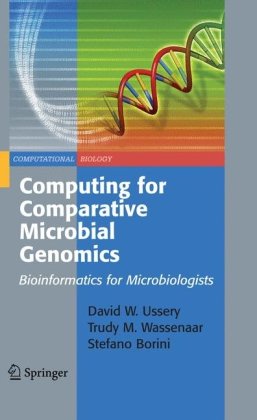

Most ebook files are in PDF format, so you can easily read them using various software such as Foxit Reader or directly on the Google Chrome browser.
Some ebook files are released by publishers in other formats such as .awz, .mobi, .epub, .fb2, etc. You may need to install specific software to read these formats on mobile/PC, such as Calibre.
Please read the tutorial at this link: https://ebookbell.com/faq
We offer FREE conversion to the popular formats you request; however, this may take some time. Therefore, right after payment, please email us, and we will try to provide the service as quickly as possible.
For some exceptional file formats or broken links (if any), please refrain from opening any disputes. Instead, email us first, and we will try to assist within a maximum of 6 hours.
EbookBell Team

4.4
72 reviewsThe major difficulty many microbiologists face is simply that of too much information. As a result of sequencing technologies becoming so economical, there is a very real and pressing need for high-throughput computational methods to compare hundreds and thousands of bacterial genomes.
This accessible text/reference provides a coherent set of tools and a methodological framework for comparing raw DNA sequences and fully annotated genome sequences, then using these to build up and test models about groups of interacting organisms within an environment or ecological niche. Easy-to-follow, this introductory textbook is built around teaching computational / bioinformatics methods for comparison of microbial genomes, and includes detailed examples of how to compare them at the level of DNA, RNA, and protein, in terms of structural and functional analysis.
Topics and Features:
• Contains five introductory chapters each representing a specific scientific field, to bring all readers up to the same basic level
• Familiarizes readers with genome sequences, RNA sequences (transcriptomics), proteomics and regulation of gene expression
• Describes basic methods to compare genomes and visualize the results for easy interpretation
• Discusses microbial communities, providing a framework for analysing and comparing individual genomes or raw DNA derived from complete ecosystems
• Introduces various atlases, building up to the Genome Atlas
• Offers numerous helpful examples throughout
• Focuses on the use and interpretation of publicly available Web tools
• Provides supplemental resources, such as Web links, at http://comparativemicrobial.com
Developed from a set of lectures for a course in Comparative Microbial Genomics taught since 2001, this wide-ranging foundational textbook is aimed at advanced undergraduate and graduate students in Bioinformatics and Microbiology. The authors are from diverse backgrounds complementing the interdisciplinary nature of the topic and consequently have developed a common scientific language. Readers will find this text an invaluable reference for computational and bioinformatics tools.